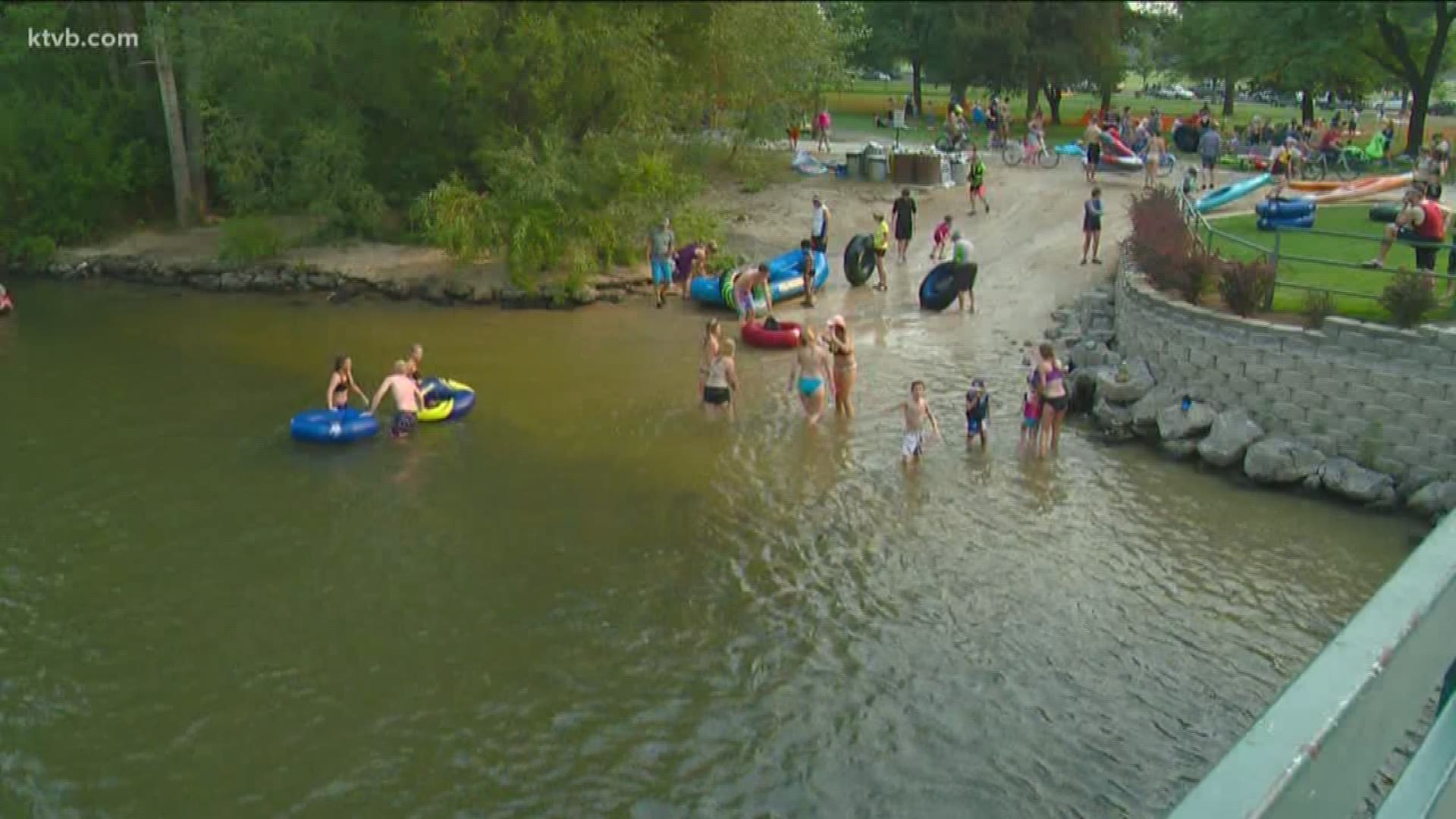BOISE, Idaho — The Boise Fire Department says it responds to at least a dozen emergency water rescues on the Boise River each year and with the Boise River floating season opening on Tuesday, July 2, here's what you need to know to stay safe on the river.
While the six-mile stretch of the Boise River between Barber Park and Ann Morrison Park can be scenic and beautiful, it's important to remember it isn't like a lazy river in a water park. Hazards can be found scattered across the river and Boise Fire just recently had to remove a dozen hazardous tree branches and other things from the river last week.
"Be aware that even though a lot of the hazards have been mitigated, as you look out here, you can see tree limbs that overhang the river and if you get under those, you can get swept off into the water, it can deflate your raft and problems can develop very quickly," Paul Roberts, the division chief of special operations at Boise Fire, said.
Scott Koberg, director of Ada County Parks and Waterways, says actively floating and paddling down the river could be the key difference between summertime fun and an emergency situation.
"You always want to be actively involved in your river trip from a safety standpoint. So passively just kind of floating wherever the current takes you isn't always the best choice," Koberg said. "There are times when you'll want to actively steer away from rocks, overhanging limbs, obstacles, things like that."
With water temperatures only reaching the mid-50s even during the hottest days, the cold water could potentially make floaters lose their ability to swim and self-rescue, according to Roberts. Officials say wearing a coast-guard certified life-jacket is key to safely floating the river.
Under Idaho law, it's also required that anyone under 14 years old wear a life jacket.
Life jackets aren't the only equipment needed on the river. Quality rafts and floats that are meant to be used on a river will also keep you safe, according to Roberts.
"The other thing we would caution people about is buying a raft from one of the superstores nearby," he said. "Those rafts are really designed to be used in a pool or a lake, still water, like Quinn's Pond or Esther Simplot Park, and not really a moving river where they can get caught up in some tree limbs, the raft becomes deflated and now they have nothing to hold onto."
Proper rafts for rent or sale are easy to find along the river, such as Boise River Raft and Tube Rentals at Barber Park.
"Most definitely everything we have is custom. It's all whitewater quality," Connie Zeller, the owner of Boise River Raft and Tube Rentals, said. "They're the Ferrari model, the thickest fabric we could get, nice mesh bottoms. So they're good quality, odds are good that if you bump into something you're going to make it down the rest of that 6-mile stretch."
According to Koberg, floating the Boise River continues to grow in popularity, with 40% more visitors to the river in 2018 than 2017.
"It's kind of the thing – it's on everybody's summer bucket list. Kind of feels like summer doesn't truly start until we can float the Boise River," Koberg said.
One other safety tip from emergency officials is to not drink and float. Roberts said if you drink before getting into the river, make sure you don't drink too much and that you're not impaired while floating the river.
According to Boise Police Department, it's also illegal to drink while on the river - open containers of alcohol are prohibited and you can be cited.
Information on floating the river and current river conditions are updated daily on Float the Boise River's Facebook page. A 2019 river floating guide is also included on the page.

